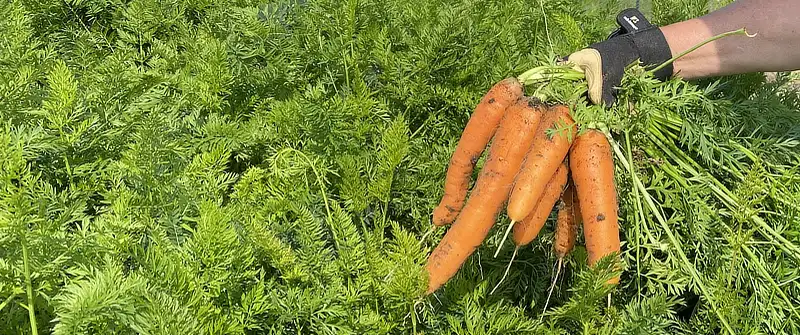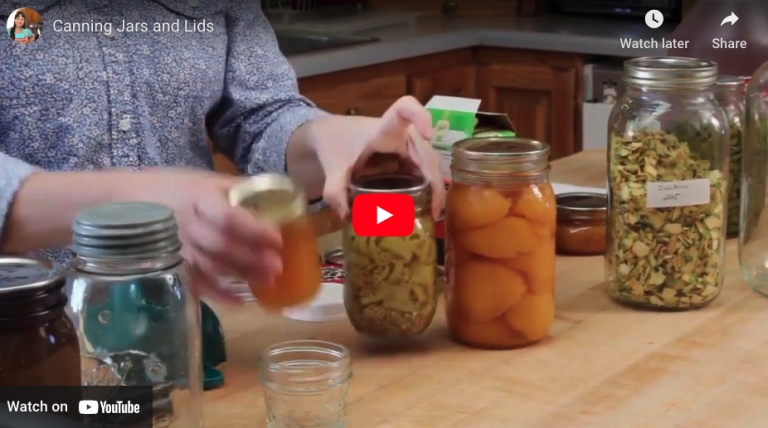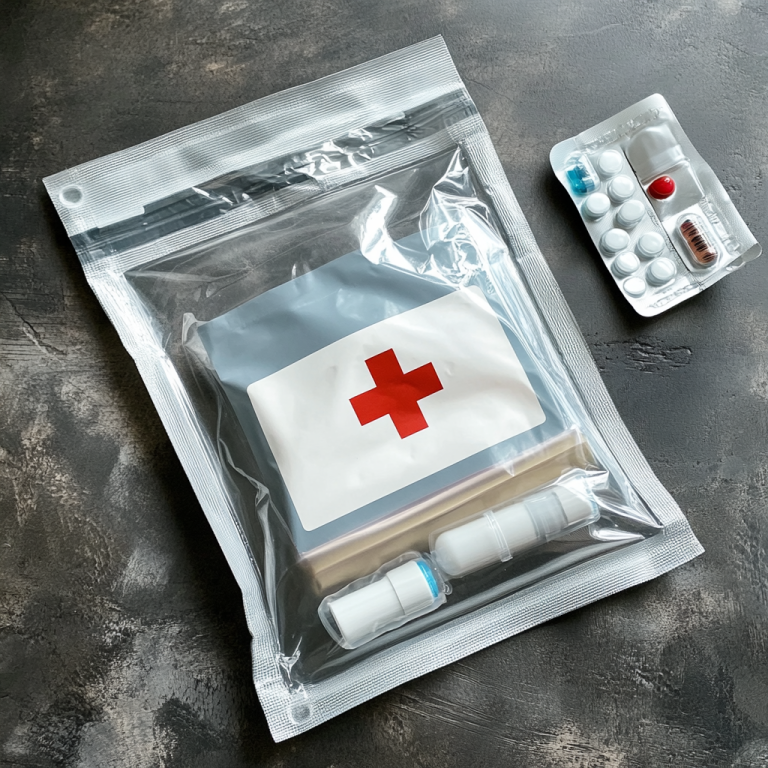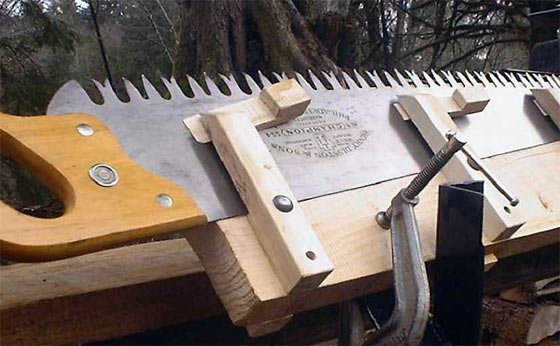If you would like to know how to can carrots from the garden, we just harvested a 4×8 raised garden bed and canned them all. Here’s how we did it..
Nearly 90 pounds of harvested carrots! It was an experiment. How many carrots could I plant in a 4×8 garden bed, and would they all grow okay if I crowded them? Answer, about 400 carrots, and yes they grew well!
I spaced them about 2 inches apart in each row, and I believe I planted 9 or 10 (8-foot) rows.
This growing season was ideal. Unusually long without an early frost. So they just kept on growing. Plenty of rain too. So much in fact that I never had to water them this year!
Home Can Carrots From The Garden
It’s all pretty easy, though it does take some time to go through the process (as with all canning). Here are the basic steps I used to can my carrots from the garden.
- Harvest
- Rinse
- Cut ends, Peel skins, Slice
- Pack Jars, Add Hot Water, Salt
- Pressure Can
- Shelf Storage
Harvest and Can Carrots the Same Day
Home gardening? Really try to do this on the same day for optimum freshness. Though not necessary, if you’re going to end up with multiple days of canning carrots, try to estimate how much to harvest for that day.
This particular harvest required 5 batches of 14 quarts each, and we did this during three consecutive days.
Carrot harvest weight compared to number of canning jars.
You will likely end up with about 80% carrot weight (from gross harvest weight) after removing green tops, cutting off ends, and peeling skins. My 88 pound harvest reduced to 70 pounds ready-to-can carrots.
The recipe books say you’ll get about 2 pounds per quart. My experience was half that. Probably because these carrots were large diameter and I couldn’t jam as many in there..
1 Quart canning jar on average held 17 ounces of my rather large sliced size garden carrots. You might simply say that a quart canning jar holds about a pound of carrots. Your results may vary.
- 10 pounds of carrots for 8 quart jars
Rinse carrots before and after peeling
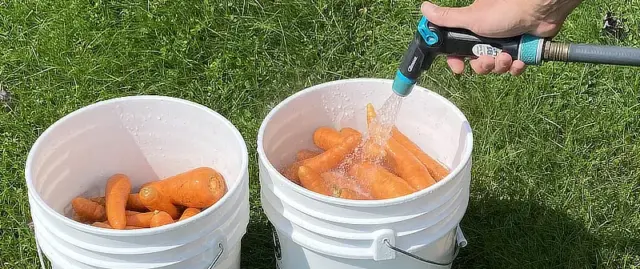
I snapped the carrot greens off while harvesting. Then loaded up 5 gallon buckets. Each full bucket held about 20 pounds.
Then I hosed off the dirt while in the buckets as shown. Tip the bucket so the dirt settling to the bottom will come out too.
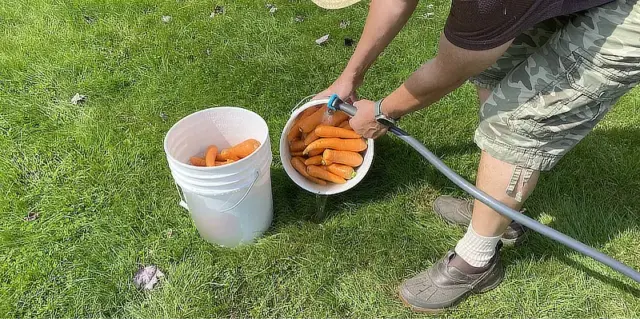
Peel the carrot skins
Now it’s time to peel the carrot skins. After slicing off the ends, Mrs. J and I got to work with our favorite vegetable peeler to get-er-done..
You might say it’s a chore, or you might say it’s therapeutic.
>> OXO Grips Peeler!
(amzn)
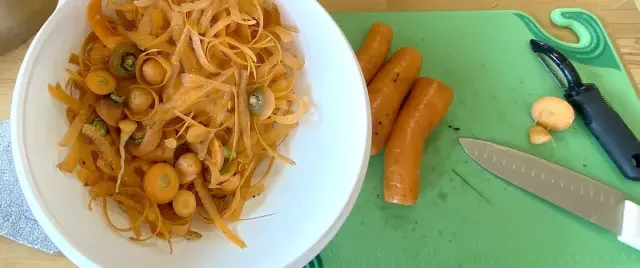
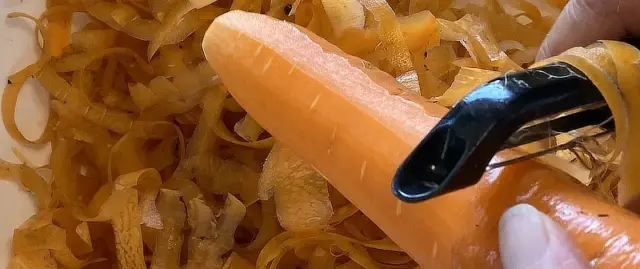
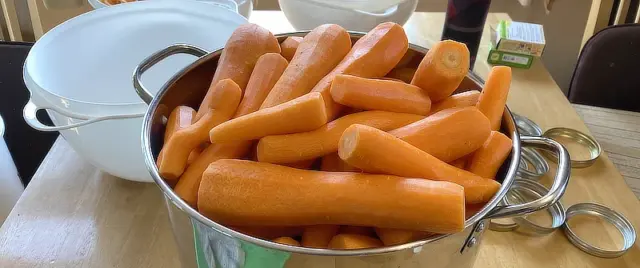
Rinse again after peeling.
Slice the carrots
This was some work. Slicing all the carrots for the canning jars. The important thing here is to be careful with that knife. Especially after doing it over and over.. I managed NOT to cut myself!
Some of these carrots were pretty fat. I’m talking 2-inches! For those, I halved, or even quartered them.
Some carrots were not very straight. So this made it more tricky to slice at times. Do you see that tool I’m using with my left hand to hold that carrot? It came in handy for some of them.
Vegetable Pronged Slicing Holder
(amzn)
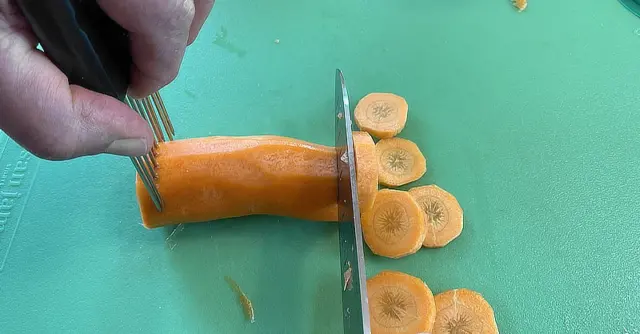
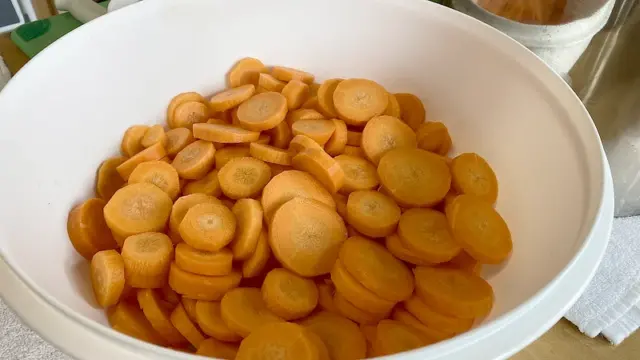
Chop chop! (I mean, slice, slice)
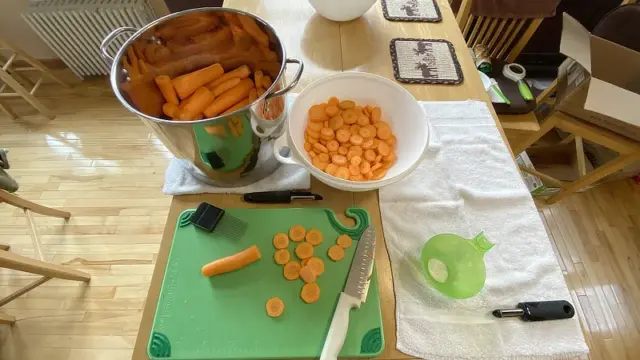
Fill Canning Jars, Add Hot Water, Salt
Make sure your canning jars are clean. Just prior to use, we run them through a ‘quick wash’ dishwasher cycle.
Also, get a big pot of hot water on the stove. Bring it just to a boil and then you’re good to go.. shut off the burner.
Fill canning jars with sliced carrots leaving 1-inch head space.
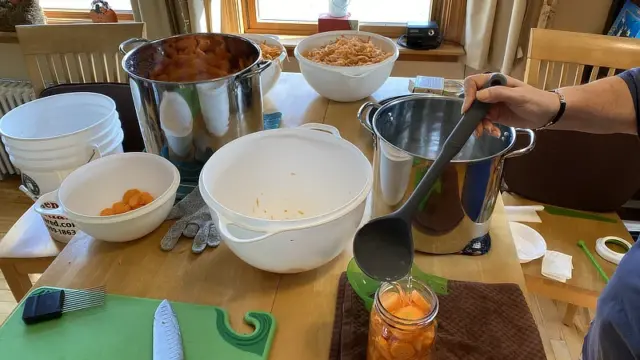
Add 1 teaspoon of salt on top of carrots in the canning jar (quart). Use 1/2 teaspoon for pint jars.
Canning Salt
(Ball brand on amzn)
Canning salt (a.k.a pickling salt) is simply pure granulated salt (sodium chloride), without any anti-caking agents or additives that are traditionally added to table salt.
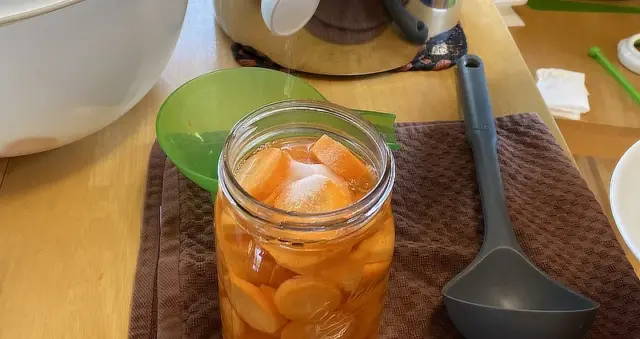
Wipe the jar rim to ensure no residue or carrot pieces which could affect the lid seal during processing.
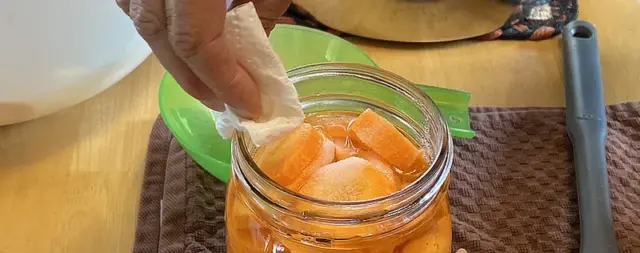
Note: Ball says that you no longer need to boil or heat up the lids. Apparently this may lead to extra soft gasket which when tightened may end up prohibiting adequate jar venting during processing. As a result, a lid that’s too tight may crinkle near the edge during processing (it has happened to me).
Place a lid, and then screw-on the ring. Snug tight, not too tight. We use the following handy band/ring tool for this:
Ball Sure Tight Tool
(amzn)
TIP: How to keep peeled carrots from going soft and drying out until the next day:
I had peeled more carrots than I needed. I was concerned they may get somewhat soft and dry out a bit – until I could process and can them the next day. The trick is as follows.. Leave them submerged in a bowl or pot of water in the refrigerator. It works!

Load up the pressure canner with jars of carrots and process!
My All American pressure canner (model 930) holds 14 quarts.
[ Read: All American Pressure Canner Features I Like]
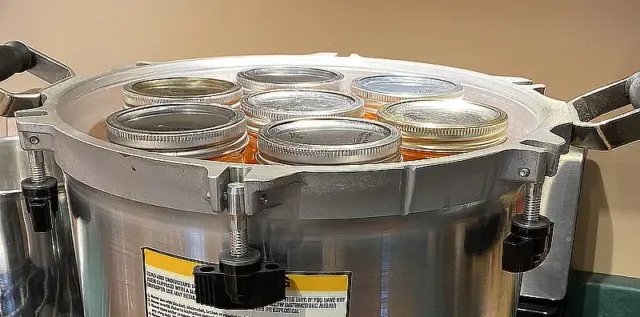
I forgot to mention.. When I start to heat up the water to add with the carrots, I also start heating up the pressure canner water (about 1.5 inches on the bottom). This way, it’s already pretty hot when I start to load the jars (quicker that way).
Pressure Canner Processing Time and Pressure for Carrots
Always refer to your Ball recipe book for pressure canner recipes.
Quart jars, dial gauge 11 PSI (altitude dependent), 30 minutes
Pint jars, dial gauge 11 PSI (altitude dependent), 25 minutes
TIP: I always bring my pressure (PSI) at least a half pound (or a pound) higher than recipe, just to ensure it doesn’t drift below minimum during processing. Simply a bit of margin that won’t hurt anything.
I abide by two canning recipe books. The Ball Blue Book and the USDA Complete Guide to Home Canning.
Ball Blue Book
USDA Guide (spiral-bound)
(amzn)
When finished processing and when the pressure returns to zero, jars are removed and placed on a towel to cool.
After they’re cool, I remove the rings to rinse the threads and jar of residual juice that may be present from processing. After they’re dry, I screw the rings back on loosely.
The Final Product!
I ended up with 65 quart jars of canned carrots from a 4×8 garden bed. Nice!

[ Read: Pressure Canning Chicken | How To Do It Yourself ]
[ Read: Pressure Canner Troubleshooting & How to Fix Problems ]







